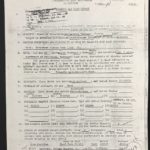
On April 26th, 1945, shortly after 9 PM, while on his first combat mission, Tom’s plane was shot down by friendly American anti-aircraft fire. Tom was killed in the crash. [1]After reading his IDPF (Individual Deceased Personnel File) I concluded that he died instantly following a catastrophic high speed impact with explosive burning of the aviation gasoline carried in … Continue readingand His radar operator, Hal Anderson, was able to bail out before the crash, but they were too close to the ground and his parachute failed to completely open. He was killed in the fall.
In his diary for April 26th, David F. Diehl, a Flight Officer in Tom’s squadron, makes this entry:
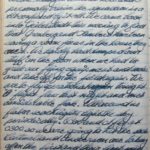
We are really in combat here and I personally believe the squadron is a bit confused by it all. We came back into Geibelstadt this morning to find that Gronberg and Lambert have been saving a room for us in the house they are in. We hardly had dumped “our stuff ” on the floor when we had to grab our flying equipment and take off for the field again. We are to fly operational tonight. “”0” flight flew last night and met considerable flak. All around us flak or searchlights light the sky periodically. Bob and I fly at 0300 so we are going to hit the sack. Cartmell and Anderson are taking off on the first and their first mission now and on the horizon the red balls of 40 mm flak lights the black.[2]boldface added for emphasis
The war diary of the 417th Night Fighter Squadron describes the night this way:
APR. 26. TONIGHT WAS RATHER DISASTROUS FOR 417 NFS. ONE OF OUR AIRCRAFT FAILED TO RETURN, ONE RETURNED WITH AN ENGINE SHOT UP BY FRIENDLY FLAK AND THE THIRD BELLY-LANDED. LTS T.E. CARTMELL AND H.A. ANDERSON, WHILE RETURNING TO BASE WERE SHOT DOWN BY FRIENDLY AA FIRE. LTS.H.J. ALLEN AND F.S. CAMPBELL WERE PATROLLING OUR AREA WHEN THEY RECEIVED FRIENDLY AA FIRE WHICH SHOT UP THEIR LEFT WING AND RENDERED THEIR LEFT ENGINE USELESS. THEY MADE THE TREK BACK TO BASE ON A SINGLE ENGINE AND LANDED WITHOUT MISHAP, HOWEVER, QUITE PUT-OUT AT BEING FIRED ON BY OUR OWN ACKACK.
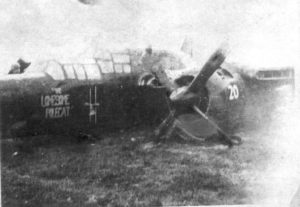
THE THIRD A/C WAS AN ERROR ON THE PART OF THE PILOT. THE PILOT, AFTER AN UNSUCCESSFUL ATTEMPT TO SET THE PLANE DOWN, PULLED UP HIS WHEELS AND CAME AROUND AGAIN. THE WHOLE THING WAS BEAUTIFUL, EXCEPT THAT HE FORGOT TO PUT HIS WHEELS DOWN AGAIN, RESULTING IN A BELLY-LANDING AN THE LOSS OF THE “Lonesome Polecat”, CREWED BY AUBILL AND HART.
Paul Peyron, writing in 1994 of his experiences in the 417th NFS[3]C’es La Guerre, Professional Help Press, Baker City Oregon, said of the night:
One night we had a disaster when our own anti-aircraft shot down a P-61 and killed the crew. Another plane approached, then made another go-around and forgot to lower its landing gear. Still another plane was shot up by our anti-aircraft but made a successful return to base.[4]P. 204
An unattributed narrative of the Headquarters Company, First Battalion, 232nd Infantry Regiment of the 42nd Infantry Division describes the night of April 26th.
At 1600 the column again moved out to a point southeast of Altisheim. There the men had another long wait before they were able to cross the bridge. It was growing dark and observation of the artillery firing was excellent from the north side of the Danube. As night fell the column again moved down the road toward the pontoon bridge.
A German plane came over and our machine guns opened up as did the other machine guns in the vicinity. The plane crashed in flames some distance away but of course the men in the convoy went on across a field that had been plowed up by armored vehicles and turned into the bridge approach. All vehicles passed over the bridge safely and continued on up a winding road to the left. The column stopped when it had gotten a sufficient distance from the bridge and a quartering party went forward to locate sleeping quarters in the little hamlet just in front.
A second plane came over and everyone piled out of the vehicles and dashed into the fields. Again machine guns and anti-aircraft guns opened up from all directions. The plane was hit and crashed on a hill to the north of the Danube, scattering burning wreckage over a large area. The men cheered enthusiastically. It was not till several days later that they learned that American gunners had shot down one of our own planes.
Major C. Richard McCray, Tom’s Commanding Officer, later wrote to Tom’s wife, Zoe. His letter was published in Tom’s hometown newspaper, “The Greenville Advocate.”
May 1st
Dear Mrs. Cartmell,
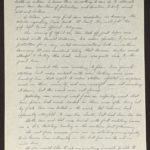
It is with deep regret that I inform you of your husband’s death in action. I know there is nothing I can do to alleviate your loss. Mention of patriotism and devotion to duty sound cold and hollow. I believe you may find some consolation in knowing the details concerning Tom’s death, at least they will fill the gap left by an official telegram.
The evening of April 26th, Tom took off just before nine o’clock with Harold Anderson, his radar operator, to furnish protection for a very vital communication link in Souther Germany. It was considered likely that German bombers would attempt to destroy this link which was quite close to the front lines. Tom reached the area according to plan. Our ground stations lost radio contact with him. Nothing more was heard of him that night. A radio station reported an airplane crash that night in the vicinity and our aircraft was out searching at dawn, but the crash was not found.

Yesterday we received word from an infantry unit that Tom’s plane had crash-landed in this area after being hit by flak. Tom was killed in the crash. Hal Anderson had apparently attempted to use his chute but had been too low. Both Tom and Hal were buried with full military honors in a U.S. cemetery in Southern Germany.
The rest of our air crew join me in expressing our sympathy. We’ve known Tom intimately in the last few months and we miss him. If you would like to ask any questions, I might be able to answer if there is any other way in which I may be of service, do not hesitate to ask.
Sincerely yours,
C. Richard McCray,
Major, Air Corps, Comdg.
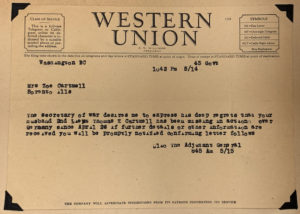

The site of the crash can be approximated through the IDPF file which listed the location as “T 308201”. This is a military map grid coordinates. Converted to contemporary coordinates, this location is 48.73777 10.87816. A 2020 Google Mapping of these coordinates reveals:
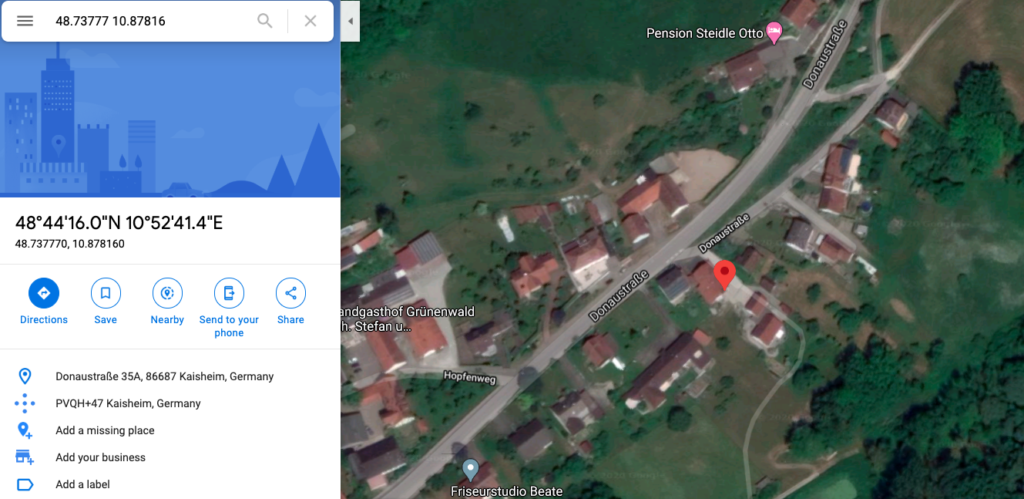
48.73777 10.87816
References
| ↑1 | After reading his IDPF (Individual Deceased Personnel File) I concluded that he died instantly following a catastrophic high speed impact with explosive burning of the aviation gasoline carried in the aircraft. It is possible he was wounded or killed by the anti-aircraft fire prior to the crash. |
|---|---|
| ↑2 | boldface added for emphasis |
| ↑3 | C’es La Guerre, Professional Help Press, Baker City Oregon |
| ↑4 | P. 204 |
